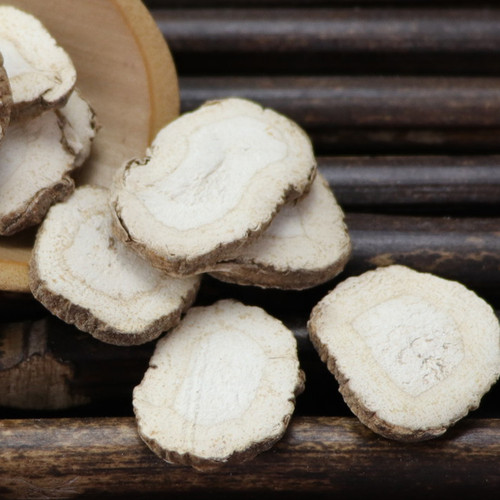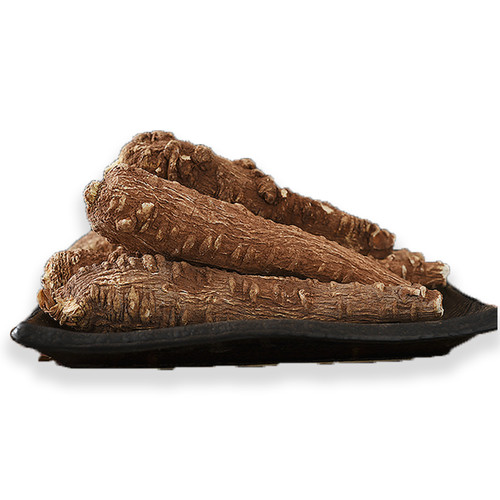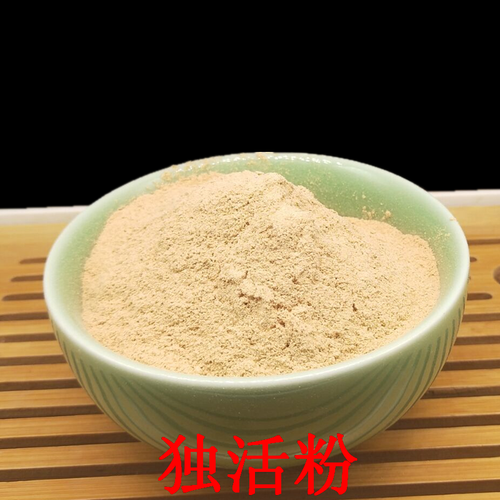Product Overview
Parts used: Dried root powder
TCM category: Warm/Acrid herbs that release the Exterior
TCM nature: Warm
TCM taste(s): Pungent
Meridian affinity: Spleen Stomach Lung
Scientific name: Angelica dahurica
Other names: Dahurian angelica, Chinese Angelica, Garden Angelica, Root of the Holy Ghost, Wild Angelica
Use of angelica roots (Bai Zhi) in TCM
Please note that you should never self-prescribe TCM ingredients. A TCM ingredient is almost never eaten on its own but as part of a formula containing several ingredients that act together. Please consult a professional TCM practitionner, they will be best able to guide you.
Preparation: Remove impurities, wash with water, slice and dry.
Dosage: 3 - 10g
Main actions according to TCM*: Relieves the Exterior and disperses Wind. Disperses Wind and Cold from the Yang Brightness channels. Relieves Wind-Damp Cold painful obstruction. Dries Dampness and pus and reduces swelling. Opens the nasal passages.
Primary conditions or symptoms for which angelica roots may be prescribed by TCM doctors*: Common cold Headache Sinusitis Leukorrhalgia Mastitis Toothache Leukorrhea
Contraindications*: Should not be used by those with Yin or Blood Deficiency
Common TCM formulas in which angelica roots are used*:
For Wind-Cold-Exterior syndrome with headache and upper respiratory congestion combine angelica roots with scallions (Cong Bai), fermented soybeans (Dan Dou Chi) and fresh ginger (Sheng Jiang).
For Wind-heat headache combine angelica roots with chrysanthemum flowers (Ju Hua) and szechuan lovage roots (Chuan Xiong).
For unsuppurated pus-filled sores combine angelica roots with platycodon roots (Jie Geng).
For toothache combine angelica roots with gypsum (Shi Gao) and bugbane rhizomes (Sheng Ma).
Key TCM concepts behind angelica roots (Bai Zhi)'s properties
In Traditional Chinese Medicine (TCM), angelica roots are plants that belong to the 'Warm/Acrid herbs that release the Exterior' category. Herbs that release the Exterior aim to to treat the early stages of diseases that affect the upper respiratory tract, the eyes, the ears, the nose, the throat or the skin. TCM believes that External diseases such as colds or allergies can only invade the body if the External environment overwhelms our Wei Qi (the TCM version of the immune system). In order to counteract this invasion Warm/Acrid herbs aim to induce sweating by increasing the flow of sweat to our capillary pores. The belief is that this will expel the disease from the body and stop it from invading further.
As suggested by its category angelica roots are plants that are Warm in nature. This means that angelica roots tend to help people who have too much "cold" in their body, although with less effect than a plant that would be Hot in nature. Balance between Yin and Yang is a key health concept in TCM. Those who have too much cold in their body are said to either have a Yin excess (because Yin is Cold in nature) or a Yang deficiency (Yang is Hot in Nature). Depending on your condition angelica roots can help restore a harmonious balance between Yin and Yang.
Angelica roots also taste Pungent. The so-called "five elements" theory in Chinese Medicine states that the taste of TCM ingredients is a key determinant of their action in the body. Pungent ingredients like angelica roots tend to promote the circulations of Qi and body fluids. That's why for instance someone tends to sweat a lot when they eat spicy/pungent food.
The tastes of ingredients in TCM also determine what organs and meridians they target. As such angelica roots are thought to target the Spleen, the Stomach and the Lung. In TCM the Spleen assists with digestion, blood coagulation and fluid metabolism in the body. The Stomach on the other hand is responsible for receiving and ripening ingested food and fluids. It is also tasked with descending the digested elements downwards to the Small Intestine. In addition to performing respiration, the Lungs are thought to be a key part of the production chain for Qi and the body fluids that nourish the body.









